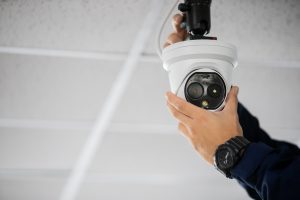Television aerials have long been a popular option for accessing free-to-air TV channels, providing viewers with a reliable way to access their favorite shows and local news. However, like any technology, TV aerials have their advantages and disadvantages when it comes to TV viewing.
Pros of TV Aerials for Viewing
Free-to-air channels
One of the biggest advantages of TV aerials is that they provide access to free-to-air channels. This means that viewers can enjoy a wide range of channels without the need for a paid subscription or additional fees, making it a cost-effective option for TV viewing.
Local channels
TV aerials are particularly useful for accessing local channels, such as local news and weather updates. These channels provide valuable information specific to the viewer’s location, making it a convenient option for staying informed about local events and news.
Reliable signal
In areas with good signal reception, TV aerials can provide a reliable and stable signal for TV viewing. This means that viewers can enjoy uninterrupted viewing without buffering or other signal-related issues.
High-definition (HD) channels
Many TV aerials are capable of receiving high-definition (HD) channels, providing viewers with better picture quality compared to standard definition (SD) channels. This can result in a more immersive and enjoyable viewing experience, especially for sports, movies, and other content that benefits from higher resolution.
Pros of TV Aerials for Viewing
Signal reception
One of the main disadvantages of TV aerials is that their performance depends on the location and surrounding environment. In areas with poor signal reception, viewers may experience issues such as pixelation, freezing, or complete signal loss, which can affect the quality of TV viewing.
Limited channels
While TV aerials provide access to free-to-air channels, the number of channels may be limited compared to paid TV subscriptions. Viewers may miss out on premium channels or specialised content that may only be available through cable or satellite TV.
Installation and maintenance
Installing and maintaining a TV aerial can be challenging for some viewers. It may require professional installation, especially in areas with difficult reception, which can add to the overall cost. Additionally, TV aerials may require regular maintenance, such as repositioning or adjusting, to ensure optimal signal reception.
Weather interference
Weather conditions, such as heavy rain, strong winds, or snow, can potentially interfere with TV aerial signals. This can result in temporary or prolonged signal loss, affecting the viewing experience during inclement weather.
Conclusion
In conclusion, TV aerials offer both advantages and disadvantages for TV viewing. They can provide access to free-to-air and local channels, as well as deliver high-definition content. However, factors such as signal reception, limited channel options, installation, maintenance, and weather interference should be carefully considered. If you’re in need of professional assistance with TV aerial installation, maintenance, or have questions about TV viewing options, don’t hesitate to get in touch with TV Local today. Our team of experts is here to help ensure you get the best possible TV viewing experience.





